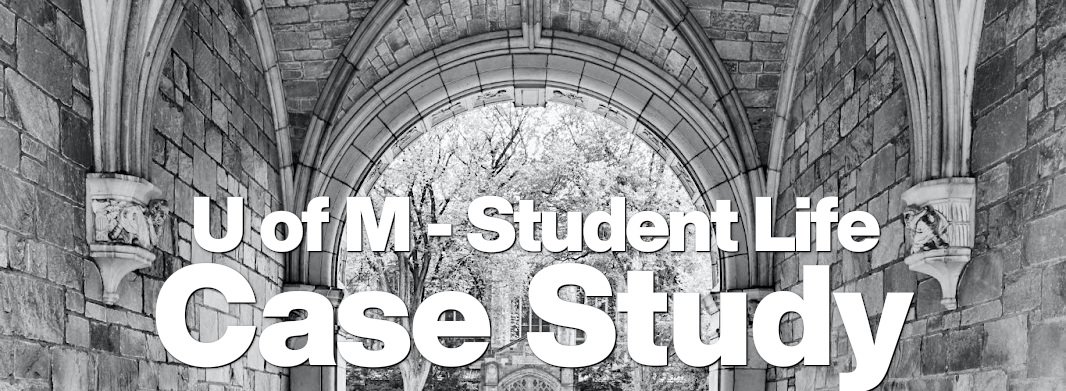The University of Michigan (U-M) Division of Student Life had stakeholders representing 26 units and 100 different websites. TUG conducted 29 interviews with 60 individual participants and then helped them develop a shared language for talking about their problem space and for prioritizing and balancing strategic considerations. Our research pointed to three key dimensions that tied their work together. We also identified ten major topical themes across the grouping of sites. We mapped the current state for each of these dimensions separately and created a diagram that merged all three overlays so they could be visualized together in one place.
Read moreImproving Internal Communications
The Ford Foundation is a globally-oriented philanthropic organization committed to advancing human welfare. TUG helped them improve their internal communications, and break down silos between programs and regions, by designing a new Intranet/digital workplace. Since Fordify was launched, we have continued to help them make the platform a valued and integral part of their work culture with a vibrant online community .
Read moreDefragmenting a Digital Footprint into a Single Portal
When we started, the University of Michigan (U-M) Human Resources digital footprint spanned nearly 30 different sites. The primary website did not fully communicate the resources available to employees and retirees nor the value of working at U-M. TUG partnered with design firm Q Ltd to redesign and develop the website to improve findability and user experience for the University’s employees, job seekers, and retirees. The top navigation was re-architected to serve user needs and the new structural framework consolidates all 25+ previous HR websites within a simple, overarching taxonomy.
Read moreRefreshing the Information Architecture to Reflect the City
The City of Ann Arbor website serves as a place for visitors, residents, and businesses to get information and access city services. The site had grown organically over time and was organized around the hierarchy of the city government, not the needs of site visitors. People wanted to serve themselves but got hung up looking for what they wanted. The site’s web analytics showed visitors bouncing back and forth, looking for what they could not find. We created a proposed navigation plan based on interviews, tested mock-ups of the proposed navigation with users, and provided annotated wireframes and specifications for the new homepage and navigation.
Read moreImproving the User Experience
Curtin University, based in Australia, has an expanding global presence, including locations in Western Australia, Malaysia, Singapore, Dubai, and Mauritius. Over 3,000 staff serve more than 50,000 students with a range of industry-aligned undergraduate and postgraduate degree courses. Curtin needed a clear information architecture strategy that meaningfully structured its ecosystem in a way that it could be easily governed and maintained while satisfying the University’s goals and those of the wide-ranging users in Australia and globally.
Read moreImproving Trial Conversion Rates for Mobile
Autodesk is a design software company that serves customers across the manufacturing, architecture, building, construction, media, and entertainment industries. Autodesk has taken a leading role in the development of robotics, Augmented and Virtual Reality, and 3D printing. Autodesk partnered with TUG to improve the conversion rate for a companion mobile app.
TUG identified obstacles, points of confusion, and opportunities for improvement for each kind of user depending on their stage in the journey. These models helped the stakeholders share the reality of the user’s experience with the broader product development team.
Read moreRearchitecting Corporate Digital Headquarters
The American Concrete Institute (ACI), founded in 1904, is the world’s leading resource for concrete standards and education, with a diverse, global membership of 20,000 individuals and organizations. The ACI website was structured with a separate silo for each kind of user. While this seemed logical, it reduced the user to just one role, sending them down a predetermined path with all the decisions already made.
ACI partnered with TUG and the design agency Q Ltd for a website and brand initiative that culminated in developing a new responsive website, logo, tagline, and brand guidelines. TUG provided strategy, planning, and information architecture services. Key highlights were defining stakeholder goals and determining user expectations based on the four discovered user groups.
Read moreIntegrating Multiple Legacy Systems
North American Bancard (NAB) built a variety of custom software systems to support new services over the years. The result was a complex and complicated digital environment where customer service reps had to juggle multiple interfaces during one service event. The confusion and poor data quality were starting to interfere with NAB’s ability to grow.
TUG helped NAB design and architect a new CRM system which integrated more than six legacy systems into an easy-to-use integrated system with a corresponding integrated data model. In the end, the client thanked us for challenging their business processes and identifying artificial complexities. Most importantly, we helped NAB transform their culture by leading the design effort that put employee success as the primary metric.
Read moreRedesigning a Consumer Store and Enterprise Portal
TechStreet—formerly a division of Thomson Reuters—provides digital access to over 500,000 engineering and technical standards from over 350 publishers. After years of steady growth via incremental changes to its eCommerce websites, TechStreet’s digital properties had grown overly complicated; it was time to simplify. Customers needed a simple process to get, find, and choose their documents quickly.
TUG collaborated with TechStreet’s development, QA, and product management teams to provide a user-experience–driven information architecture. User interviews and analysis of customer service logs informed new personas that aligned the team on a clear definition of success. The rebuilt site emphasized that TechStreet is a store: a place to browse, search, and purchase documents. The revised site led to a 12% increase in purchases and a 10% year-over-year revenue increase.
Read more








